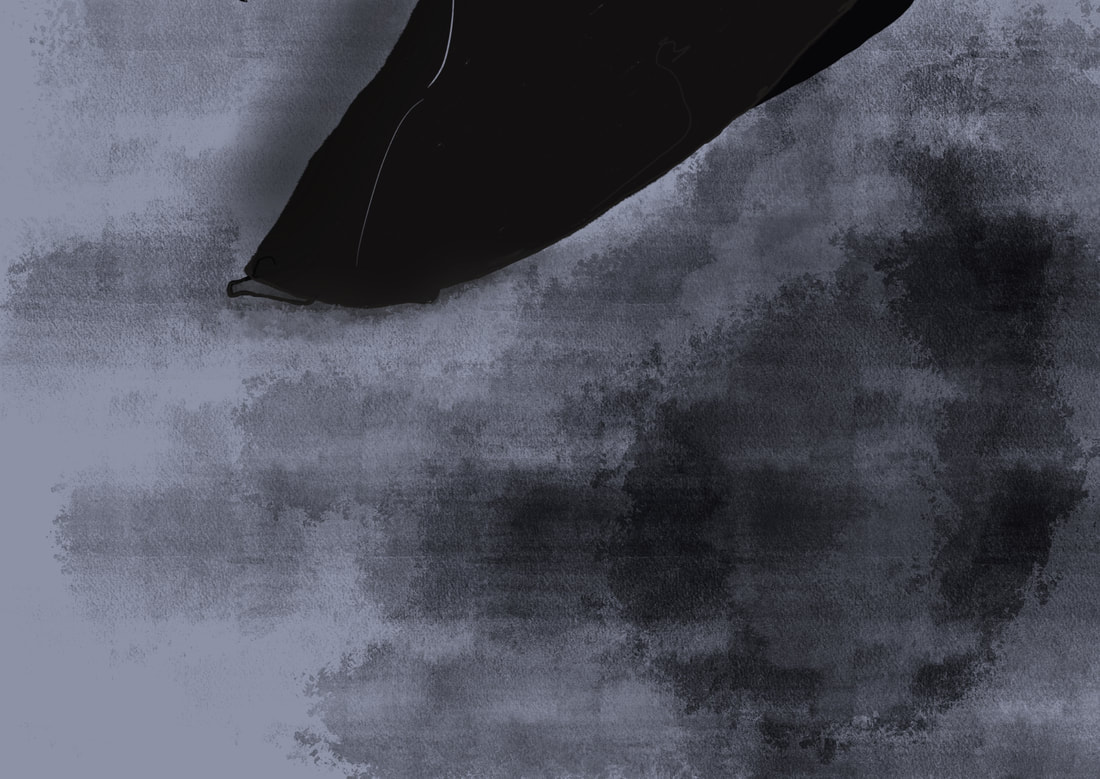NUTRITIOUSANDNICE.COM
Structural Imbalances

The skeletal system enables the body to stand erect, provides protection for internal organs, and a framework for muscles and tendons to be attached allowing for movement. Hematopoiesis occurs within the bone marrow, that is, the production of blood and blood plasma. Bones also plays a part in mineral storage which is essential for the maintenance of blood calcium levels.
There are three primary types of bone cell: Osteoblasts, which form new bone. Osteoclasts, which dissolve bone, and Osteocytes which play a regulatory role. Osteocytes are surrounded by bone and help communicate with other bone cells. They are mature bone cells that help maintain the bone matrix. They transmit signals controlling the behaviour of osteoblasts and osteoclasts, and are therefore an important regulator of bone mass and phosphate metabolism.
The activity of the Osteoblast and Osteoclast cells are also influenced by hormones. The thyroid gland produces the hormone Calcitonin, which contributes to bone strength by helping calcium to be incorporated into the bone. Calcitonin works with the gastrointestinal system. It is thought that gastrin and/or cholecystokinin CCK may trigger Calcitonin release. The sensitivity of the Calcitonin release mechanism is sexually differentiated, being greater in males. The responsiveness of Calcitonin release declines with ageing. In bones Calcitonin prevents reabsorption of calcium. In the kidneys Calcitonin increases the excretion of calcium, sodium, and potassium and reduces excretion of magnesium. It may also act as a satiety hormone.
The Parathyroid glands secrete the parathyroid hormone PTH. Secretion is regulated by the blood level of calcium. When Calcium levels fall, secretion of PTH is increases and vice versa. The main function of the PTH is to increase the blood calcium levels. This is achieved indirectly by increasing the amount of calcium adsorbed from the small intestines and reabsorbed from the renal tubules. If these sources provide inadequate supplies, then PTH stimulates osteoclasts and reabsorption of calcium from bones. PTH and calcitonin from the thyroid gland act in a complimentary fashion to maintain blood calcium levels within the normal range. This is needed for; muscle contraction, blood clotting, and nerve impulse transmission.The Kidneys also increases Vitamin D metabolism. The activated Vitamin D then increases calcium absorption from the gut. Because of this, calcium levels are generally very stable. This is important to ensure that the nervous system and the body’s muscles can work properly, and also that bones remain strong.
In the first 5 to 6 years of life, around 100 mg of calcium is retained daily for bone formation. This increases to 400 mg plus during puberty. After adolescence, daily absorption of calcium declines to around 150 mg. Percentage of calcium absorption from the intestine reaches; 75% in infancy, and between 20% to 30% in adults, declining further with increasing age. In childhood and adolescence calcium intake is important for optimal formation of the bone and for the prevention of osteoporosis in older age. After the age of 30 there is no further increase in bone mass and a gradual reduction occurs.
Joints enables a greater range of movement. Some joints provide a more protective function, as in the fibrocartilage of intervertebral discs. Synovial joints are held close together by a sleeve of fibrous tissue and the capsule contains a small amount of fluid. These joints offer a range of movement. The synovial fluid provides nutrients for the structures within the joints, and act as a lubricant. It also helps to maintain the joint's stability. It contains phagocytes which remove microbes and cellular debris
Muscle There are three types of muscle cells in the body; skeletal, smooth, and cardiac. Skeletal muscles are responsible for posture and movement and are attached to the bones of the skeleton. They are generally considered to be of voluntary control. The size and strength of skeletal muscles are maintained or increased by regular exercise. In addition, the growth hormone and testosterone help muscles grow in childhood and maintain their size in adulthood. Smooth muscle surround many arteries and contract to adjust blood-flow. They also surround the intestines and their contraction helps move food and faeces along the digestive track. Hormones and neurotransmitters control the contraction and dilation of these muscles. Cardiac muscle contract and relax rhythmically without conscious awareness.
Imbalances of Muscular-skeletal System

Dysfunction is usually felt as pain. When you think of structure one can include the internal structures of organs. For example, the Gastrointestinal tract: if the intestinal mucosa is compromised by inflammation it will lead to increased permeability.
Structurally our body is made of a cells, each having a specific function. Grouped together into tissues which can be again differentiated by function. What is common to all cells is their outer layer, or cell wall. The cell’s phospholipid structure helps maintain the cell’s inner environment from its surrounding extracellular state. The cell wall has a particular property where within its structure there is a balance between rigidity and fluidity. This enables it to respond to the influence of hormones and other substances that need to enter the cell to influence its metabolism.
Certain conditions can affect the ability of the cell to optimally perform its function.
The muscular-skeletal system is dependent upon various nutrients to enable it to build strong and healthy bones and muscles. This is particularly true during development. During this period bone density is established through a combination of diet and exercise. In later years bone density plays an important role in preventing conditions such as osteoporosis. Similarly with muscle, exercise and good nutrition can help to maintain and build muscle strength. Conversely lack of use through immobility can lead to the atrophying of the muscle. Muscles also helps the bone to maintain good posture.
The Endocrine system and neurotransmitters play important roles in the functioning of the musculoskeletal system. Over or under production of the relevant endocrine hormones will detrimentally affect the growth, and functioning of bones. For example, Acromegaly is a hormonal disorder that develops when the pituitary gland produces the growth hormone in excess. The bones increase in size, including those of the hands, feet and face. Overproduction of the Parathyroid hormone will lead to excess Calcium in the blood resulting in a number of conditions, such as kidney stones. Neurotransmitters may also be defective. For example Myasthenia Gravis is a condition when antibodies attack acetylcholine receptors (at the neuromuscular junction). Synapses can no longer transmit their signals, resulting in the muscles being unable to contract. An autoimmune condition can affects the joint in a major way as in the inflammatory autoimmune disease, Rheumatoid arthritis. It is a systemic disorder which not only affects the joints but also at other sites within the body, including the heart, blood vessels and skin. It results in joint pain, swelling and stiffness. It can also cause tiredness and lack of energy, high-temperature, sweating, poor appetite and weight loss. It can result in permanent joint damage and also there is a higher risk of developing cardiovascular diseases such as a heart attack and stroke.
Structurally our body is made of a cells, each having a specific function. Grouped together into tissues which can be again differentiated by function. What is common to all cells is their outer layer, or cell wall. The cell’s phospholipid structure helps maintain the cell’s inner environment from its surrounding extracellular state. The cell wall has a particular property where within its structure there is a balance between rigidity and fluidity. This enables it to respond to the influence of hormones and other substances that need to enter the cell to influence its metabolism.
Certain conditions can affect the ability of the cell to optimally perform its function.
- Obesity as well as placing more stress upon the body can also play a significant role in reducing the effectiveness of various hormones.
- One’s emotional state can also have a significant influence, as in the sensation of pain. For example, the surge of adrenalin during stress can reduce the body’s ability to feel pain.
- Menopause and general ageing can effect bone density. A more sedentary life can lead to a reduction of muscle and will have a significant impact upon the body.
The muscular-skeletal system is dependent upon various nutrients to enable it to build strong and healthy bones and muscles. This is particularly true during development. During this period bone density is established through a combination of diet and exercise. In later years bone density plays an important role in preventing conditions such as osteoporosis. Similarly with muscle, exercise and good nutrition can help to maintain and build muscle strength. Conversely lack of use through immobility can lead to the atrophying of the muscle. Muscles also helps the bone to maintain good posture.
The Endocrine system and neurotransmitters play important roles in the functioning of the musculoskeletal system. Over or under production of the relevant endocrine hormones will detrimentally affect the growth, and functioning of bones. For example, Acromegaly is a hormonal disorder that develops when the pituitary gland produces the growth hormone in excess. The bones increase in size, including those of the hands, feet and face. Overproduction of the Parathyroid hormone will lead to excess Calcium in the blood resulting in a number of conditions, such as kidney stones. Neurotransmitters may also be defective. For example Myasthenia Gravis is a condition when antibodies attack acetylcholine receptors (at the neuromuscular junction). Synapses can no longer transmit their signals, resulting in the muscles being unable to contract. An autoimmune condition can affects the joint in a major way as in the inflammatory autoimmune disease, Rheumatoid arthritis. It is a systemic disorder which not only affects the joints but also at other sites within the body, including the heart, blood vessels and skin. It results in joint pain, swelling and stiffness. It can also cause tiredness and lack of energy, high-temperature, sweating, poor appetite and weight loss. It can result in permanent joint damage and also there is a higher risk of developing cardiovascular diseases such as a heart attack and stroke.
Bone Health
|
There are two opposing forces at play when we consider the structure and functioning of bones. The work of osteoblasts which forms new bone, and osteoclasts which dissolves bone. Osteocytes play a role in regulating the behaviour of osteoblast and osteoclast activity. Bone is made up mainly of Collagen. During its formation osteoblasts secrete a substance called Osteoid, which is made up of a fibrous protein and a mucopolysaccharide which acts as a glue to bind the protein. Its strength is derived from the addition of Calcium in the form of Calcium Phosphate. The majority of Calcium in the body, around 99%, is found stored within the bones, the remainder is circulating in the blood. Calcium is an important mineral in the body and is involved in a number of processes, for example; muscle contraction, blood clotting, nerve impulses, regulating the heart beat, and fluid balance within cells. Therefore its level within the blood is carefully monitored. Some symptoms of excess Calcium are; Kidney stones, constipation, bone pain, weakened muscles, lethargy and fatigue. While too little can lead to weakened bones, muscle spasms, confusion and depression, also numbness and tingling in hands, feet, and face. Calcium balance is controlled by 3 hormones; The Parathyroid Hormone acts to raise Calcium levels, Calcitonin lowers, and Vitamin D increases levels of circulating calcium ions. When calcium levels are low, the parathyroid hormone is released by the parathyroid glands into the blood which stimulates osteoclast and inhibits osteoblast activity, thereby increasing the release of Calcium from the bone into the blood. It also causes the Kidneys to stop calcium being lost in urine as well as stimulating the kidneys to increase Vitamin D metabolism. The activated vitamin D then increases calcium absorption from the gut. Calcitonin produced by the Thyroid gland has the opposite effect. Calcitonin decreases blood calcium levels by inhibiting osteoclasts, stimulating osteoblasts, and stimulating calcium excretion by the kidneys. Calcitonin plays a more significant role during childhood as it stimulates bone growth, during pregnancy to reduce maternal bone loss, and during periods of prolonged starvation. Osteoblasts also release Osteocalcin which stimulates the Pancreas to release insulin, which increases the uptake of glucose by skeletal muscles, thereby enhancing exercise. Osteoblasts also release Lipocalcin 2 which plays a role in the suppressing of appetite. Regular exercise stimulates osteoblast activity, which will then help to increase insulin sensitivity and the suppressing of appetite. |
An important hormone is the role played by oestrogen. Oestrogen inhibits the activity of osteoclasts. During menopause there is a significant decline in the levels of oestrogen, which can result in enhanced bone fragility due to an increase in osteoclast activity. This leading to Osteoporosis; (weakened bones), making them fragile and more likely to break.
Supporting Bone Health
Supporting Bone Health
- Regular exercise, in particular weight bearing and resistance exercises. These can include simple things, such as walking, jogging, climbing stairs to lifting weights. Exercise not only helps to increase osteoblast activity but also helps to maintain a healthy body weight.
- Calcium rich foods include; broccoli, green leafy vegetables, cabbage and okra (spinach is not a good source as it contains oxalic acid which interferes with Calcium absorption) soybeans, turnips, almonds, buckwheat.
- Vitamin D, Sunlight contributes to the body's production of vitamin D. For Vegans mushrooms, sprouted seeds, and fortified foods such as in alternative milks (which is a good way to make ensure one is getting adequate levels of Vitamins D and B12). However research has found that Vegans are no more prone to Osteoporosis than the average omnivore.
- Excess alcohol and caffeine can interfere with calcium absorption.
[ i ] Parallax section below. Click on the section below to upload image. Don't worry if it looks weird in the Weebly editor. It'll look normal on your published site.
To edit or delete your image, press the "toggle" button below. Then, hover over your image until a popup appears with the "edit" and "delete" options. Since these are parallax sections, you may need to scroll a bit up or down to be able to click on the "edit image" popup.



